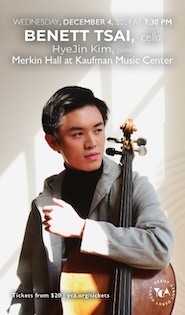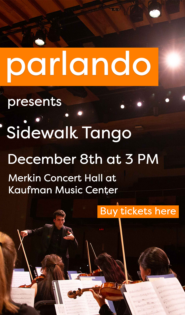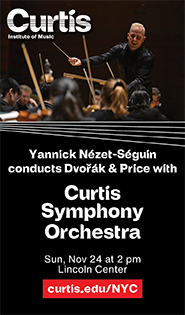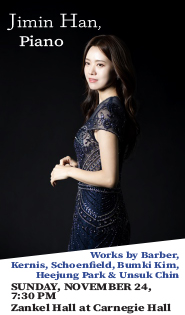Philadelphia Orchestra and two-and-a-half pianists open Carnegie season with mixed American program
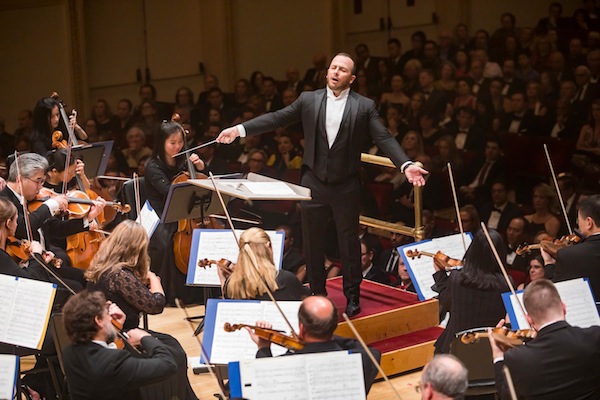
Yannick Nézet-Séguin conducted the Philadelphia Orchestra Wednesday at Carnegie Hall’s Opening Night concert. Photo: Chris Lee
The audience at Carnegie Hall’s season-opening gala Wednesday night was in a festive mood, and greeted the Philadelphia Orchestra’s rather over-upholstered performances of music by Bernstein and Gershwin with more enthusiasm than they earned.
Beating time clearly from the podium, the orchestra’s music director, Yannick Nézet-Séguin, marched his troops through Bernstein’s music for On the Waterfront and West Side Story with impressive precision, and zero swing. This approach proved less damaging to the Waterfront film score, which Bernstein had conceived along classical symphonic lines, than to the Broadway and Latin accents of West Side Story.
In Gershwin’s Rhapsody in Blue, the no-swing factor was compounded by the bottom-heavy “Philadelphia sound,” in a massive orchestration that had nothing to do with the original dance-band scoring by Ferde Grofé described in Christopher H. Gibbs’s program note.
Issues with the orchestral part, however, took a back seat in this performance to the novelty of seeing the piano solos played by two-and-a-half pianists.
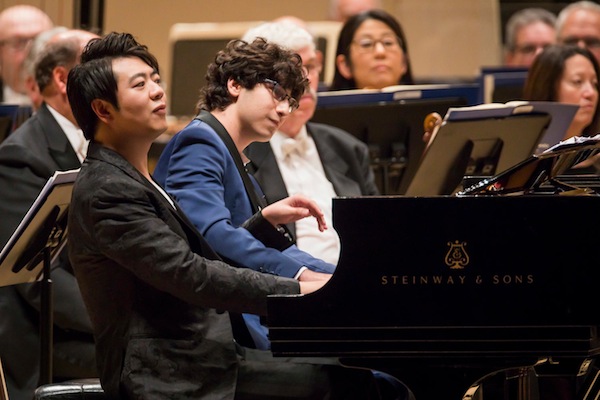
Lang Lang and Maxim Lando (above) performed Gershwin’s “Rhapsody in Blue” with Chick Corea Wednesday night. Photo: Chris Lee
The original plan had called for two superstar pianists, the classical virtuoso Lang Lang and the esteemed jazzman Chick Corea, to sit at two pianos and trade “takes” on Gershwin’s themes, and maybe shed some light on what’s classical and what’s pop about this fascinating hybrid score.
A recent injury to Lang’s left hand, however, necessitated calling in reinforcements, in the person of Maxim Lando, a 14-year-old alumnus of the Lang Lang International Music Foundation who already has considerable international experience playing some of the most challenging works in the piano repertoire.
Seated at Lang’s left, young Lando contributed not just Gershwin’s original left-hand part but some witty and stylish two-handed solos, and wasn’t shy about reaching over his mentor’s right hand to make a point in the treble.
This improvisatory, multi-pianist performance was also intended, no doubt, to recreate some of the excitement of the piece’s wet-ink premiere in 1924—with the composer at the piano, and bandleader Paul Whiteman conducting from a score showing only blank spaces for the piano solos, with no cue for the orchestra except the instruction “wait for nod.”
On Wednesday, conductor Nézet-Séguin often had to wait quite a while for the nod, as Lang-Lando and Corea tossed phrases back and forth, and Corea took off by himself on flights of fancy.
The jazzman dazzled with blistering arpeggios and jagged rhythms, but seemed a fish out of water at times, unsure how much contemporary jazz to inject into this Jazz Age concerto, which is essentially a valentine to Liszt and Rachmaninoff with a vernacular American accent. Perhaps for that reason, his playing often sounded mushy and lacking in conviction compared to Lang’s assured, colorful Romantic phrasing.
In any case, it was an intriguing experiment, and it had its moments. The applause for the two superstars and the brave young virtuoso was ecstatic.
Opening the program, the Symphonic Suite from On the Waterfront sounded at first wistful and violent by turns, like the “20th-century equivalent of Tchaikovsky’s fantasy overture Romeo and Juliet” of Bernstein biographer Humphrey Burton’s description (quoted in Paul J. Horsley’s informative program note).
But Bernstein’s assemblage lacked a big Tchaikovsky-style love theme or that piece’s compelling sonata form, and eventually it went the way of most film-score and complete-ballet concert performances, wandering in the weeds without the visuals to make sense of it. Nézet-Séguin and his players at least gave it an alert and sensitive reading.
About the concert’s closing number, Symphonic Dances from West Side Story, all one can say is that loud, fast, and accurate doesn’t equal mambo. As the big, lush orchestra lumbered through the score, even the delicate little “Maria” dance for flutes had an elephantine feel to it.
Ragged woodwind attacks were another sign that the players weren’t really caught up in the music, or the conductor’s conception of it.
One had hopes for the score’s more lyrical moments, but Nézet-Séguin broadened them ponderously, and the Philadelphia strings seemed so in love with their vaunted “sound” that they forgot to play melodies on a line.
And sad to say, the daring gesture of closing a gala concert softly, with the score’s aching last echo of the lyric ”Somewhere,” came off as merely dim and prosaic.
Still, the dramatic opening pages of On the Waterfront and the jolly messing-around with Rhapsody in Blue echoed as good things that can happen in a concert hall. One hopes for many more from Carnegie Hall in 2017-2018.
The ensemble L’Arpeggiata 7:30 p.m. Friday at Zankel Hall. carnegiehall.org; 212-247-7800.
